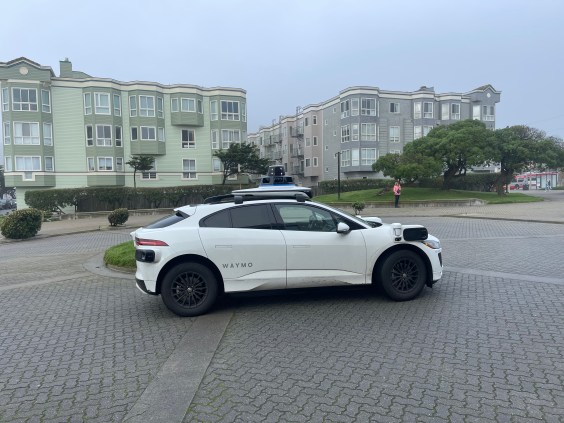Note: GJEL Accident Attorneys regularly sponsors coverage on Streetsblog San Francisco and Streetsblog California. Unless noted in the story, GJEL Accident Attorneys is not consulted for the content or editorial direction of the sponsored content.
In London, Zurich, Toronto, Paris, and a whole lot of other cities, you get one card--and more importantly, one charge--to ride transit over a given distance. There's no need to worry about which agency runs what bus, train or ferry, or whether or not you'll get charged a second time if you take a connecting service, because fares are based on zones and are coherent and rational.
At Monday's nine-member Clipper Executive Board meeting at the Metropolitan Transportation Commission, managers of Caltrain, BART, AC Transit, VTA, and other regional transit agencies defeated a motion to study the costs and business case for that type of fare integration in the Bay Area. Caltrain's CEO, Jim Hartnett, said he was "uncomfortable" because it might cost Caltrain revenue.
"This is why we should indefinitely put off a study of how much it would cost?" said Friends of Caltrain's Adina Levin, who was at the meeting, in a phone interview with Streetsblog. "If you fear how much it would cost, all the more reason to do a business case study!"
Streetsblog listened to a recording of the meeting; it's full of comments from commissioners such as Hartnett, BART General Manager Grace Crunican, VTA head Nuria Fernandez, and Michael Hursh of AC Transit voicing similar concerns about lost revenue and using that to justify voting against the study.
The study, which would cost $600,000 to conduct, was proposed after a workshop earlier this year on fare integration strategies. At the workshop, board members, managers of the different agencies, and representatives from cities that have benefited from universal transit passes discussed integrated fares models and how they can grow ridership and revenue. "Everyone came back from this workshop and everyone agreed the next step is to do a business case study. That doesn't commit us to do anything, but gives us important data that we've never had," said Seamless Bay Area's Ian Griffiths, who also spoke at the meeting.
"All that the Clipper Executive Board was asked to do was request $600,000 of RM2 money put towards a business case study," he reiterated. "This is just the first step of a process."
But it's a process it seems Bay Area transit managers want to make sure never starts.
Griffiths was especially disappointed in outgoing BART General Manager Crunican, who speaks frequently about the importance of customer focus, but this time joined the parochialism of her fellow managers and pushed to delay the study until at least October.
Levin tweeted this highlight from the back and forth:
Grace Crunican - if you want to go fast, go alone, if you want to go far, go together. If we want to get there, we should believe in the path we're on. I believe the transit agencies are the right entities to lead this....
— Adina Levin (@alevin) June 17, 2019
Of course, to have a European-style integrated fare system, a single umbrella entity has to collect fares, based on a zone system, which are then dispersed to operators. As long as individual transit agencies continue to "lead" on fares, as Crunican called for, we will continue to have what we have now: a mess of complex, irrational fares, separately determined by the Bay Area's 27 parochial operators.
From a SPUR report on fare integration, the status quo, and what it means for customers:
It was 9:30 p.m. and I was waiting for the bus to come outside the 19th street BART station in downtown Oakland. I noticed the woman waiting next to me had a paper transfer ticket in her hand — a rare sighting these days given the prevalence of Clipper cards. Curious, I asked her why. She explained that she usually walks to and from BART — 30 minutes each way — instead of paying a second fare for the bus and was hoping the paper transfer would get her a free ride. When the bus arrived several minutes later, with plenty of space, she got on. But when the driver explained that the paper transfer only gave her a 50-cent discount, she got off the bus and walked home. This is a scene that repeats itself over and over every day throughout the Bay Area: people making the choice not to use transit — not because it isn’t reliable or frequent enough, but simply because transit fares are confusing, intimidating, and not affordable.
"I understand the fear about the costs," said Levin. "But that’s why you do the study.... the managers need to get what it means to use their systems as a customer, as a rider."
"This has been an issue for a very long time. We're concerned if we keep kicking this can, we won't be able to impact Clipper 2," said SPUR's Arielle Fleisher, who authored her organization's position paper on fare integration and is involved in a project to upgrade Clipper. "We're going to miss this window of opportunity to incorporate fare integration... industry experts and riders want it."
"Grace Crunican led an effort to torpedo the regional fare integration study. Jim Hartnett disagreed that fares should be 'affordable,'" wrote Nick Josefowitz, MTC Commissioner and WETA Board member, in an email to Streetsblog. "It was such a classic example of business-as-usual here in the Bay Area."






